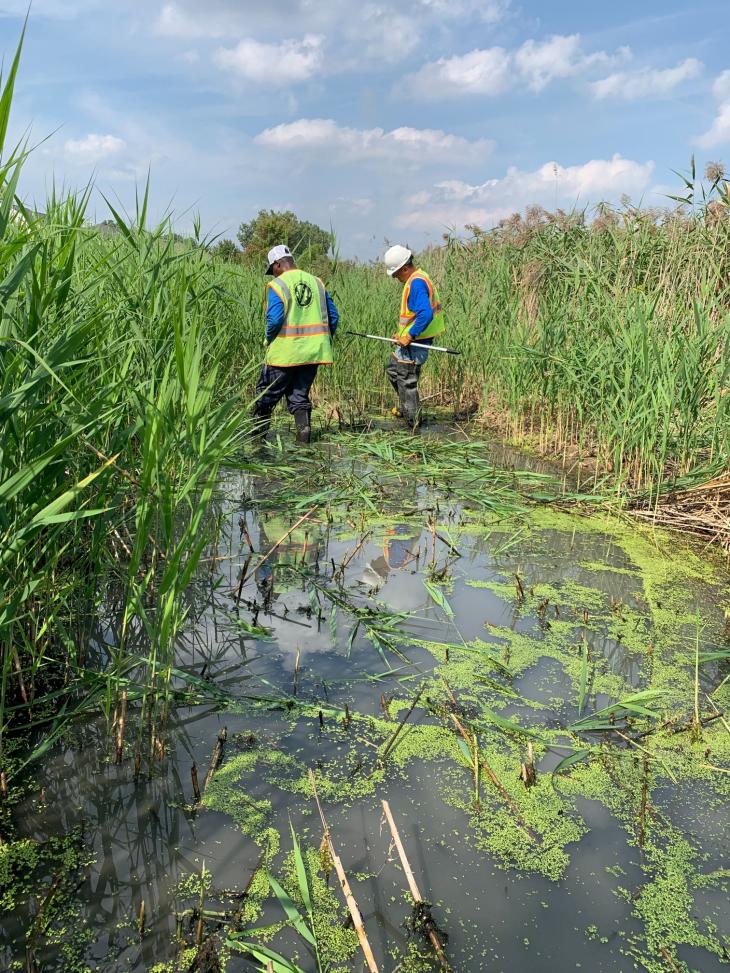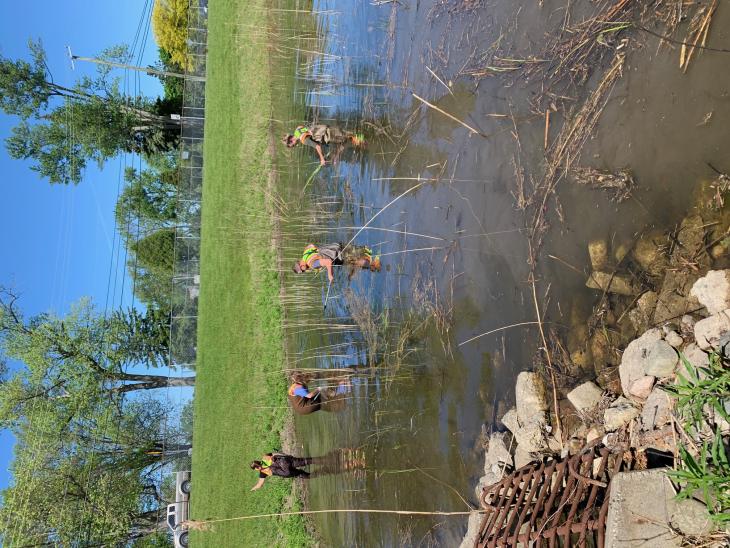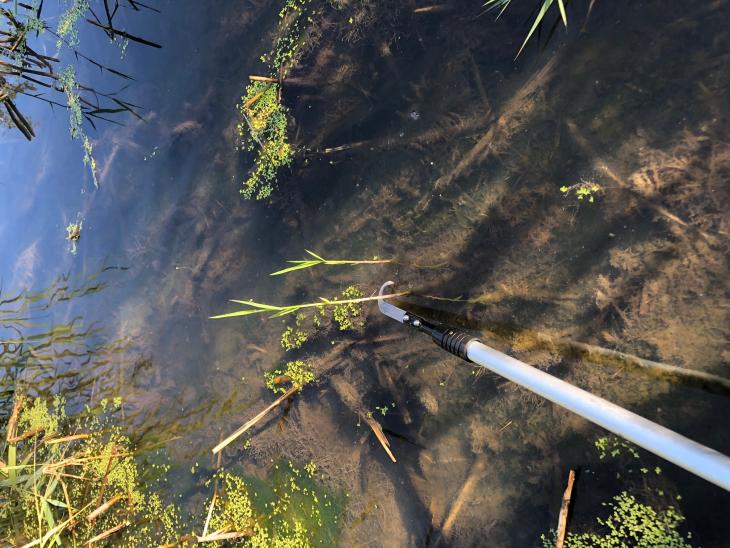What is it?
Non-native Phragmites (Phragmites australis), also known as common reed, is a vigorous perennial grass that grows in and around wetlands and shore areas, including roadside ditches or other low spots in the landscape. Invasive phragmites form dense stands that can grow to 12 feet in height and remain standing through all seasons. These stands create a monoculture that chokes out other species necessary for a healthy ecosystem and alters the wetland hydrology. They also create hazards in the built environment by blocking roadway views and stormwater flow. A native subspecies exists, but the invasive variety is more typically found in Macomb County.
Other issues created by Phragmites infestations include degraded shoreline views and access, as well as the fire hazard created by the large amounts of dry biomass after the growing season. Stands of decomposing Phragmites can alter the surface elevation of marshes or wetlands, as well as block or impede the flow of water through open drains.
Phragmites in County drains
County drains lie within easements, typically 60 feet wide, that cross private property to convey stormwater safely. Property owners are responsible for vegetation maintenance, including noxious or invasive species like Phragmites, in a County drain easement. The Macomb County Public Works Office is only responsible for removal of phragmites and other vegetation if it creates a barrier to flow and a flooding risk to neighborhoods and businesses.
Once established, Phragmites is difficult to eradicate. Methods for control include herbicide treatment, mechanical control such as by repeated mowing and drowning by cutting below the water line.
Phragmites resources
- Tips for “cutting to drown” and “effective spading” of Phragmites
- A Guide to the Control & Management of Invasive Phragmites
- Michigan Department of Environment, Great Lakes and Energy (EGLE) website on Phragmites
- SEMCOG Spotlight on Invasive Species: Phragmites Video










